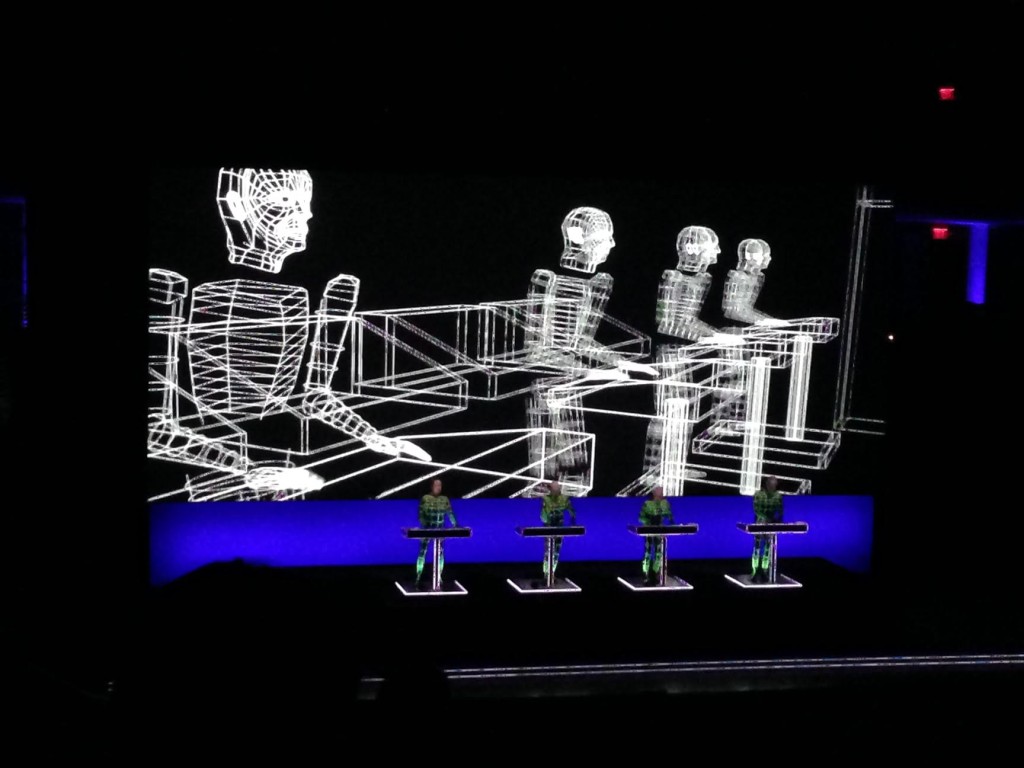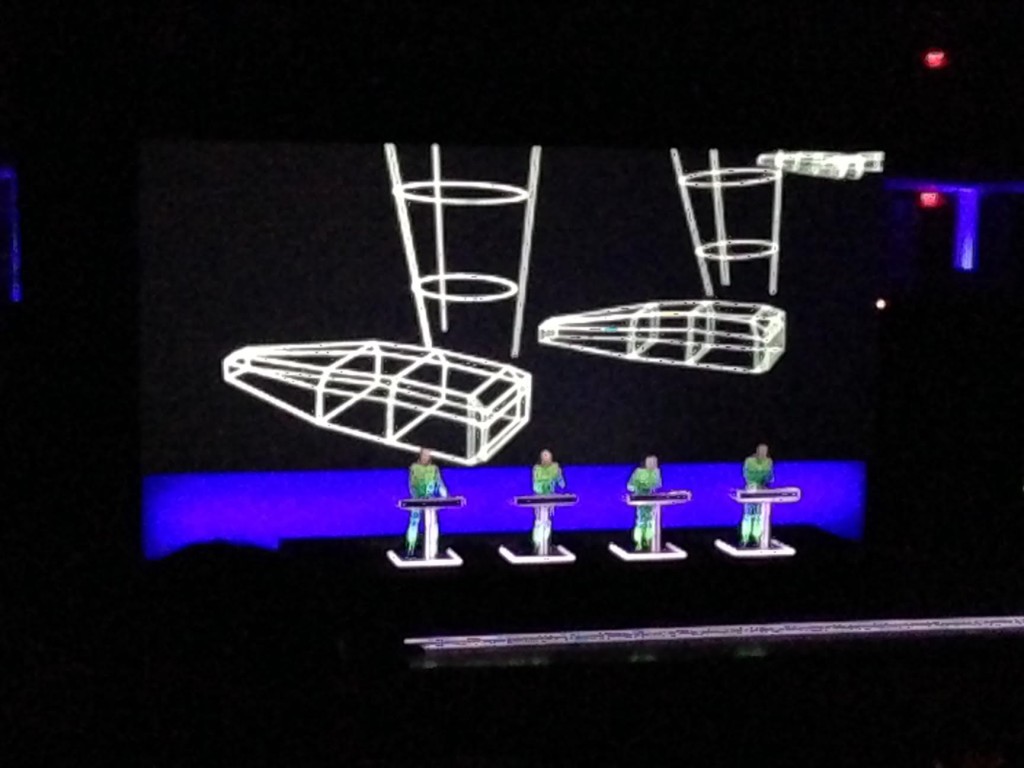 In theory, every live appearance is a 3D concert, right? But for Kraftwerk’s current U.S. tour, which kicked off Saturday in Bethesda, patrons were given 3D glasses upon entry. The band, indeed, was live for the most part, if you count standing mainly motionless at a series of consoles.
In theory, every live appearance is a 3D concert, right? But for Kraftwerk’s current U.S. tour, which kicked off Saturday in Bethesda, patrons were given 3D glasses upon entry. The band, indeed, was live for the most part, if you count standing mainly motionless at a series of consoles.
But the glasses came in handy in turning the images on the backing screen into little graphic space. That meant the digits on the opening “Numbers” floating out in sequence, or undulating on a grid, before a seemingly three dimensional scale of that 1981 era terminal floated out front and center during “Computer World,” and a VH bug appeared to herald “Autobahn.”
Graphic identification has been important with every album from Kraftwerk, the innovative German band who helped create electronic dance music long before anyone thought to make it an acronym. They helped develop the vocoder before the birth of rappers who’d use it to pretend they could sing. And they seemed to do so so sure-footedly, without a single misstep.
And their music sounds fresh and light despite its mooring to tubes and electrodes and blips and beeps. That’s because they infused most of it with melody and, in place of lyrics, declarative phrases that suggested children’s books or learning a second language (indeed, many of their recordings came in different languages).
There is but one original member left in the group that began an astounding 45 years ago. Ralf Hütter taking the left hand console, is heard only a couple of times in concert, in the first verse of “Computer Love” at the show’s start, and to thank the audience at the end. Otherwise, his voice and the others are hidden by electronic alteration. The other members, Fritz Hilpert, who joined nearly 30 years ago, Henning Schmitz, who jumped aboard 15 years ago and Falk Grieffenhagen, who joined just three years ago, act as though they are as interchangeable as the famous mannequins who are dashed on the stage during the encore of “The Robots.”
We don’t see what they are individually playing until the end, when they each take a bow at the end of the second encore in “Musique Non Stop,” each playing a riff or hitting a percussive machine on their keyboard before taking a bow.
It hardly matters though, since the musicianship was built into the hard-drive of the music, which sounds like it may or not be all prerecorded. Either way, it sounds great. Like the graphics that dazzle above their heads, the sound has been improved, sharpened and optimized for the performance at a concert hall as cooly precise as the band.
Fans loved the march through their work — the cool green tint of “Compter World” leading to the constructivist red of “The Man-Machine,” Franco flag-bordered “Tour de France” and the long ride down the “Autobahn.” Some of the visuals were even tailored to place, as when the spaceship in “Spacelab” targeted D.C., seemed to float down the National Mall before stopping at the venue’s front door.
Not every performance warranted 3D glasses, as when well-chosen old footage from fashion shows accompanied “the Model.” But most everything else used the technology.
Like the music itself, it was tastefully restrained — only a couple of times doing that thing where an antenna looks like it will poke you in the eye.
The band’s costumes — jumpsuits marked with grids that glowed at concert’s end, seemed both suitably futuristic and retro. Those who had seen similar all-hits shows were enthused by the innovative new 3D presentation. Next time, the show may come in a pill form.
The setlist for Kraftwerk in Bethesda was:
- “Numbers”
- “Computer World”
- “Computer Love”
- “The Man-Machine”
- “Spacelab”
- “The Model”
- “Neon Lights”
- “Metropolis”
- “Autobahn”
- “Geiger Counter”
- “Radioactivity”
- “Electric Cafe”
- “Tour de France”
- “Tour de France Etape 1”
- “Tour de France Etape 2”
- “Trans-Europe Express”
- “Abzug”
- “The Robots”
- “Planet of Visions”
- “Boom Boom Tschak”
- “Techno Pop”
- “Musique Non Stop”
